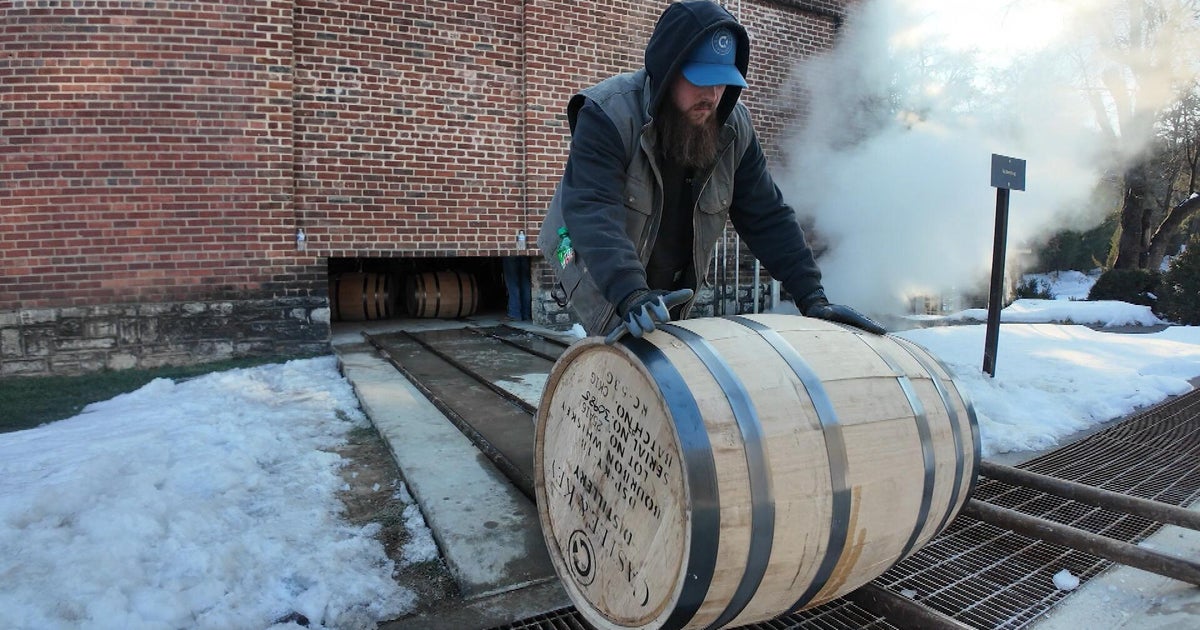Barrel Alchemy: How Bourbon's Thirst is Transforming America's Cooperage Industry
Business
2025-04-06 23:00:37Content

In the world of bourbon, wooden barrels are far more than simple storage vessels—they are alchemists of flavor, transforming raw spirits into liquid gold. These carefully crafted containers play a pivotal role in bourbon production, imparting rich, complex characteristics that define the spirit's unique profile.
As bourbon ages within these charred oak barrels, a magical transformation occurs. The wood's porous nature allows for a delicate interaction between the spirit and the barrel's interior, infusing the liquid with deep caramel, vanilla, and woody notes. Each barrel tells a story, contributing nuanced flavors that cannot be replicated through any other method.
The charring process is particularly crucial, creating a layer of carbon that acts as a natural filter and flavor enhancer. This intricate dance between bourbon and barrel is what elevates the spirit from a mere alcoholic beverage to a sophisticated, carefully crafted experience that bourbon enthusiasts around the world have come to cherish.
Liquid Gold: The Artisan Craft of Bourbon Barrel Aging
In the world of artisanal spirits, few processes are as intricate and revered as the bourbon barrel aging technique. This centuries-old craft transforms ordinary distilled spirits into extraordinary liquid experiences, blending science, tradition, and culinary artistry into every carefully crafted barrel.Unlocking the Secret of Bourbon's Deepest Flavor Mysteries
The Architectural Marvel of Wooden Barrel Construction
Wooden barrels represent far more than simple storage containers in the bourbon production process. Each barrel is a meticulously engineered vessel, carefully constructed to interact chemically and physically with the aging spirit. Master coopers select specific wood types, typically American white oak, with extraordinary precision. These woods contain unique cellular structures that enable complex flavor interactions, releasing natural compounds like vanillin, lignin, and tannins that dramatically transform the liquid's character. The barrel's internal structure becomes a sophisticated flavor laboratory. As bourbon rests within these wooden chambers, microscopic interactions occur between wood and spirit, creating a dynamic environment of chemical transformation. Temperature fluctuations cause the wood to expand and contract, allowing minute amounts of oxygen to penetrate and soften the spirit's harsh edges.Chemical Alchemy: Wood's Transformative Power
The bourbon aging process transcends simple storage, representing a profound chemical dialogue between wood and spirit. Each barrel acts like a living organism, breathing and exchanging molecular compounds that gradually reshape the liquid's fundamental characteristics. Charring the barrel's interior creates a layer of activated carbon that filters impurities while simultaneously introducing smoky, caramelized notes. Distillers understand that no two barrels are identical. Variations in wood grain, moisture content, and previous usage create unique flavor profiles. Some barrels might impart subtle hints of previous contents—whether whiskey, wine, or other spirits—adding layers of complexity to the bourbon's final taste.Craftsmanship and Tradition in Barrel Selection
Selecting the perfect barrel is an art form requiring generations of accumulated knowledge. Experienced coopers and distillers examine each wooden vessel with near-scientific scrutiny, assessing its potential to elevate bourbon's sensory experience. They consider factors like wood age, grain tightness, previous usage, and potential flavor contributions. Modern bourbon producers often experiment with innovative barrel treatments, including specialized toasting techniques, unique wood selections, and carefully controlled aging environments. These approaches push traditional boundaries, creating increasingly sophisticated flavor experiences that challenge consumer expectations.Environmental Influences on Barrel Aging
Geographic location plays a surprisingly significant role in bourbon barrel aging. Kentucky's distinctive climate—with dramatic seasonal temperature variations—creates ideal conditions for spirit maturation. Warehouse positioning, altitude, and ambient humidity all contribute to the bourbon's ultimate flavor profile. Barrels stored in different warehouse locations experience varying environmental conditions. Those positioned near windows or external walls undergo more dramatic temperature fluctuations, potentially accelerating flavor development. Conversely, centrally located barrels might age more gradually, producing subtler, more nuanced spirits.Sustainability and Future of Barrel Crafting
As environmental consciousness grows, bourbon producers are reimagining barrel production and usage. Sustainable forestry practices, wood recycling programs, and innovative aging techniques are becoming increasingly important. Some distilleries now explore alternative wood types or develop methods to maximize barrel longevity, reducing overall environmental impact. The bourbon industry's commitment to craftsmanship ensures that wooden barrels will remain central to spirit production. Each barrel represents a complex intersection of tradition, science, and artistic expression—a testament to human creativity in transforming simple ingredients into extraordinary sensory experiences.RELATED NEWS
Business

Trade Tensions: Trump Hints at Tariff Flexibility, Signals Potential Wiggle Room
2025-04-12 13:07:20
Business

Fake Businesses Infiltrate Google Maps: Inside Google's Battle Against Digital Deception
2025-03-19 18:48:00
Business

Breaking: Young Credit Card Users Defy Market Expectations, Amex Chief Reveals
2025-04-19 21:18:33





